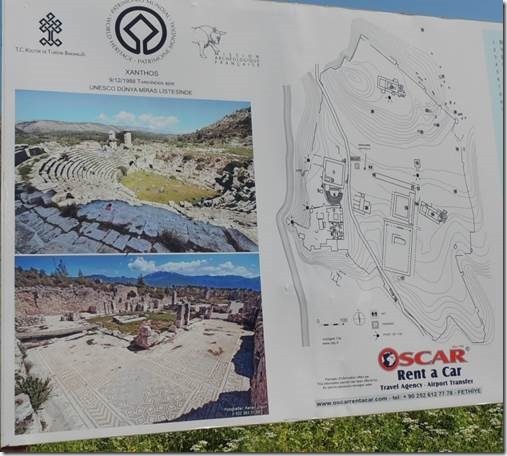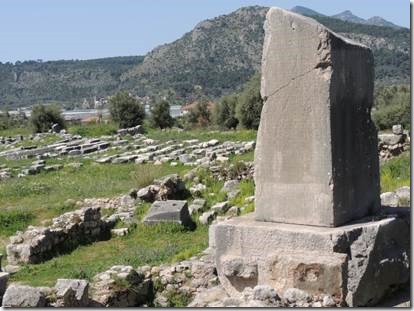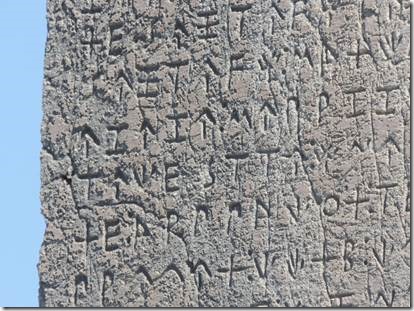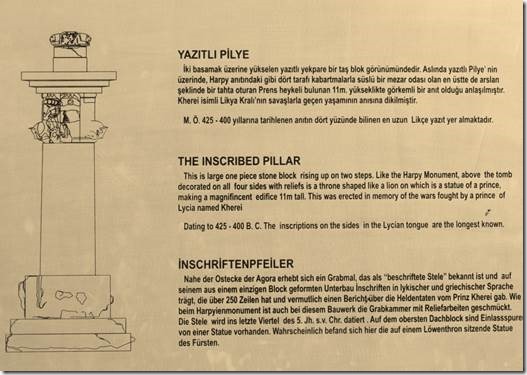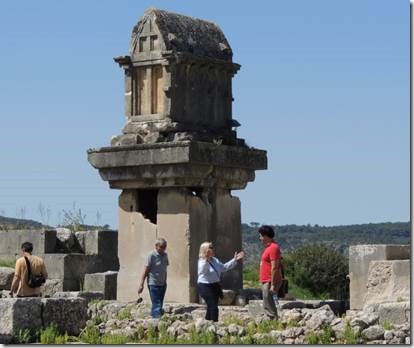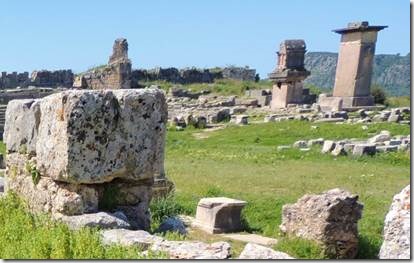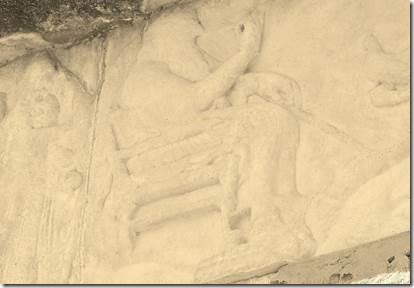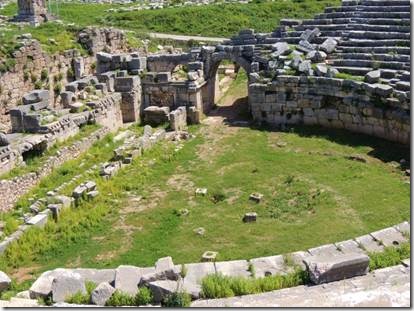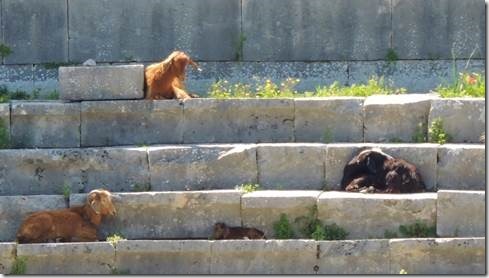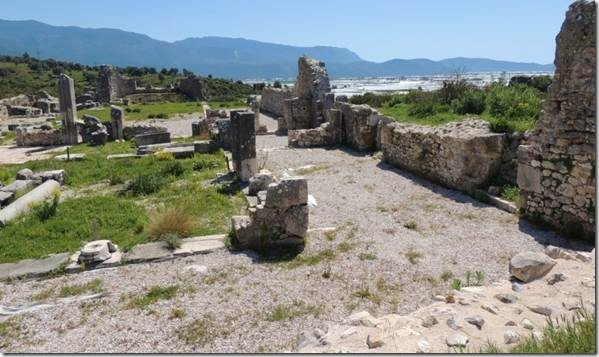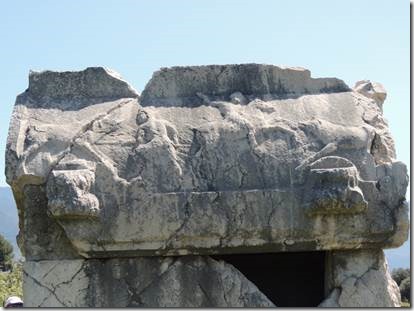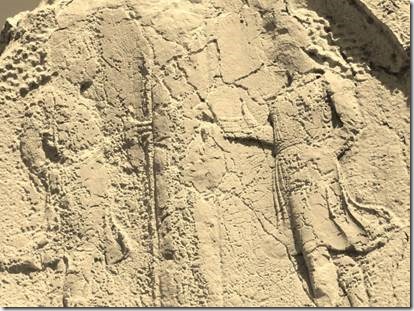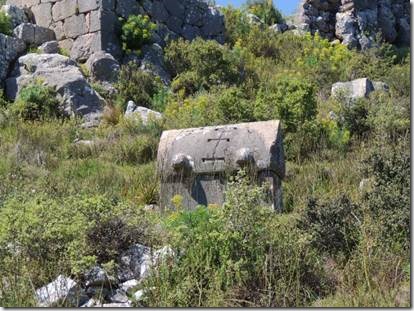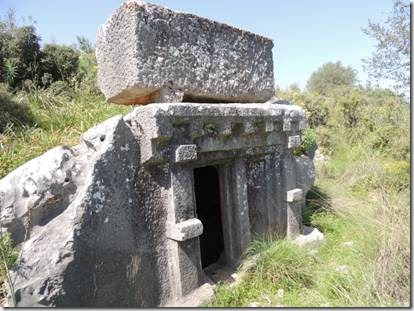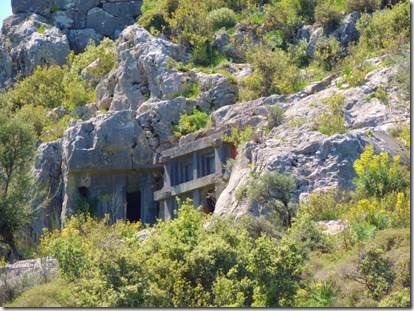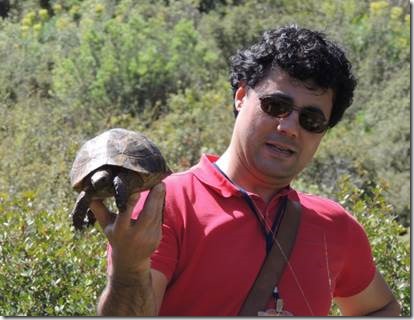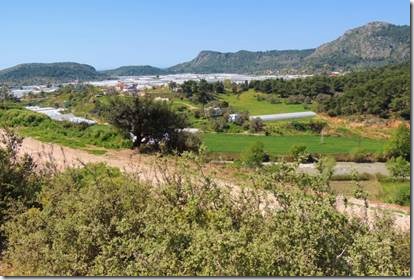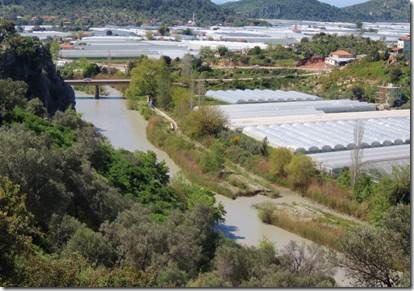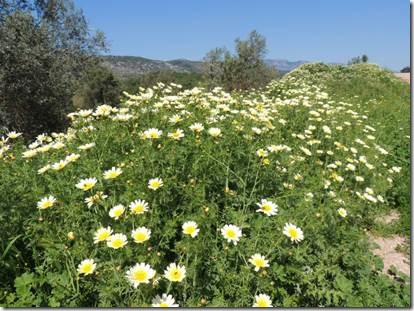Merhaba
One day I’ll finally finish writing up our trip to Cappadocia. In the meantime here’s the story, in at least 2 parts of our Friday tour to Xanthos and the Lycian Way in Fethiye. It was a beautiful day and we had some fun walking in the hills which is my favorite part. I’ve included some links to info about Xanthos. It’s one of those places that brings up the interesting question as to who owns antiquities: the country of origin or the country that has it now in a museum.
Ru
Xanthos, the Lycian Way, and 7 Noses Part 1……Xanthos
Randal and I had stopped at Xanthos in July of 2011 at the end of our motorbike trip to Konya. It was early in the morning and the ticket office was closed so I just took a few photos and we left. This trip we had a guided tour of the site and we also walked up the hill behind it to the Necropolis. We didn’t make it to Latoon so that might be for another trip.
“Xanthos was the capital city of the Lycian Federation and its greatest city for most of Lycian history. It was made famous to the Western world in the 19th century by its British discoverer Charles Fellows. It is very old – finds date back to the 8th century BC, but it is possible that the site may have existed during the Bronze Age or during the first centuries of the Iron Age. Xanthos and Letoon are often seen as a "double-site", since the two were closely linked and Letoon was administered by Xanthos. Letoon was the sacred cult center of Lycia, located less than 10 km to the south of Xanthos. Xanthos-Letoon is one of the most remarkable archaeological sites in Turkey. For this reason, it has been registered in the UNESCO World Heritage Sites list. Currently there is a French team excavating Xanthos and Letoon.” http://www.lycianturkey.com/lycian_sites/xanthos.htm
http://whc.unesco.org/en/list/484 is the UNESCO World Heritage Site
|
“The history of Xanthos is quite a violent – the Xanthosians twice demonstrated the fierce independence of the Lycian people when they chose to commit mass suicide rather than submit to invading forces. The Xanthosian men set fire to their women, children, slaves and treasure upon the acropolis before making their final doomed attack upon the invading Persians. Xanthos was later repopulated but the same gruesome story repeated itself in 42 BC when Brutus attacked the city during the Roman civil wars in order to recruit troops and raise money. Brutus was shocked by the Lycians’ suicide and offered his soldiers a reward for each Xanthosian saved. Only 150 citizens were rescued. We made our houses graves And our graves are homes to us Our houses burned down And our graves were looted We climbed to the summits We went deep into the earth We were drenched in water They came and got us They burned and destroyed us They plundered us And we, For the sake of our mothers, Our women, And for the sake of our dead, And we, In the name of our honor, And our freedom, We, the people of this land, Who sought mass suicide We left a fire behind us, Never to die out… Poem found on a tablet in the Xanthos excavations, translated by Azra Erhat Xanthos became the seat of an archbishopric in the 8th century, but was deserted during the first wave of Arab raids in the 7th century. |
|
Inscribed Pillar |
|
Pillar Tomb A completely unique tomb in Lycia, actually two-tombs-in-one – a normal Lycian sarcophagus stands upon a shorter-than-usual pillar tomb. It is quite tall, only slightly shorter than the Harpy Tomb. The date of this tomb is disputed, some sources say 4th century BC, other 3rd. http://www.lycianturkey.com/lycian_sites/xanthos.htm |
|
Clay copy of a relief on the Harpy Monument Harpy Tomb"; it was previously believed that the winged women figures in the freize were harpies (monsters from Greek mythology with the head of a woman and the body of a bird). It is now thought that these figures may depict sirens carrying off the souls of the dead. |
|
Amphitheatre “Probably dates from the 2nd century AD and is thought to have been built in the same site as the earlier Hellenistic one. Only the upper rows of the auditorium are missing, having been used as construction material for the northern wall of the acropolis. The stage building is still partially standing and was once of two stories and decorated with columns. “ http://www.lycianturkey.com/lycian_sites/xanthos.htm |
|
Goats and tiny baby goat (center bottom stair) sunning themselves in the amphitheater. |
|
Acropolis No. 1 On the southwest corner, above the amphitheatre, probably constructed in the 4th century BC. Ruins of a temple thought to be dedicated to Artemis are found here, as well as the foundations of a large structure consisting of many rooms, probably a palace that was destroyed by the Persian general Harpagus. From here you get a great view of the entire valley and the Eşen River. |
|
Necropolis Lies to the east of the second acropolis, many tombs and sarcophagi with interesting reliefs and lids |
|
Taṣ with friend. |
|
I walked up the road past the ruins to see what I could see |
|
Esen River flowing by the hundreds of greenhouses. |
|
It was a beautiful time to visit Xanthos with all of the wildflowers blooming. |

